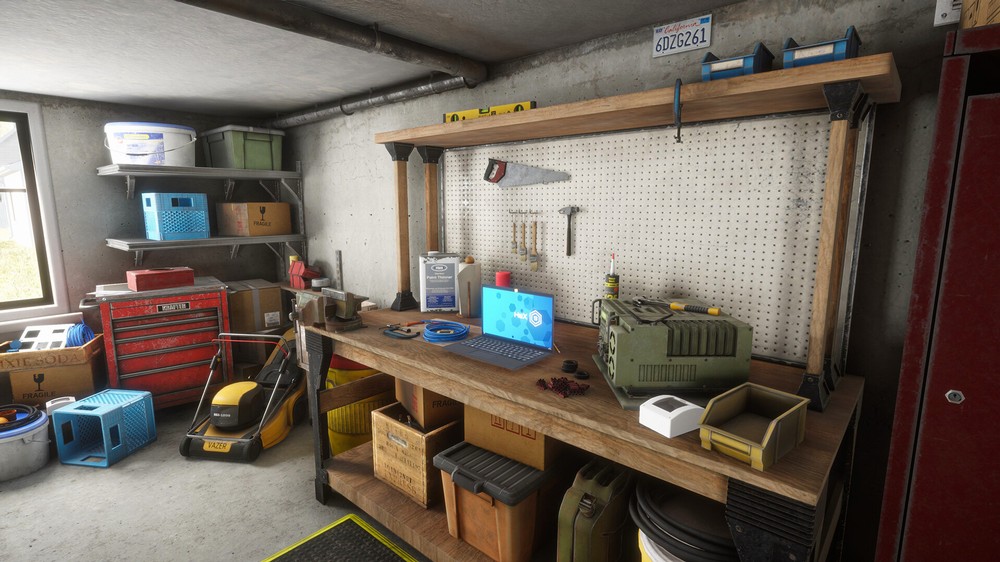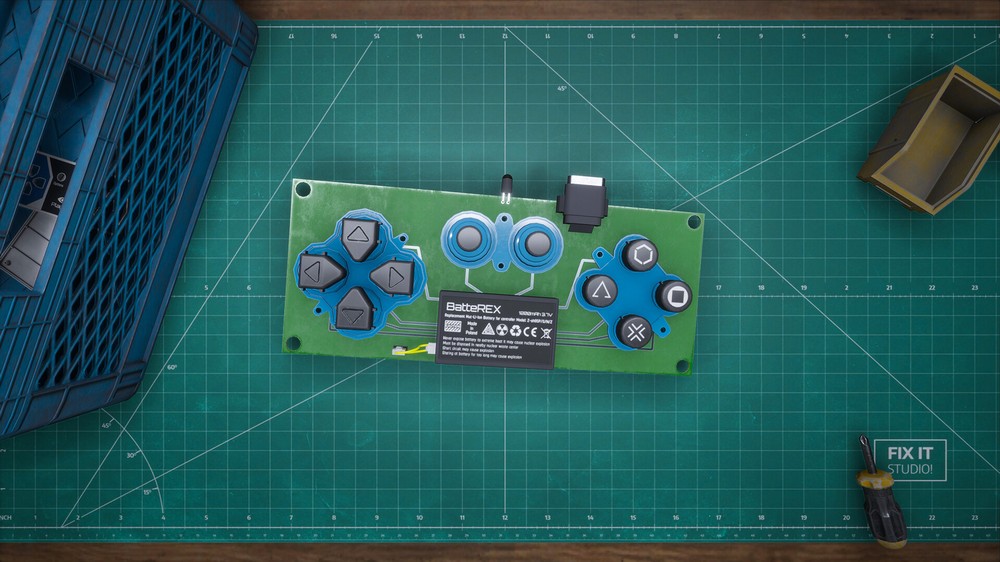During the summer of 2022, the gaming community was taken by storm by PowerWash Simulator. There was something about it that drove the community in flocks to literally spend days washing imaginary locations. Some people even took into the business and started doing it for a living. Since then, many simulators have become available including the Electrician Simulator. It certainly has a ton to offer and gives the player a general understanding of what it is like to be an Electrician.
The newest in realistic job simulators, Electrician Simulator simulates many elements of standard household electrical repairs and repairs to electronic components on gadgets. For the on-location portion of the game, the player will be charged with tasks like changing lightbulbs, troubleshooting electrical switches, and fixing wiring faults. The player’s little home workshop will be used for gadget repair tasks, which include disassembling the affected devices and testing/replacing faulty components. By performing these tasks, the player receives experience and levels up; leveling up is necessary in order to purchase parts and equipment from an electrical supply store. The player successfully runs a one-man electric handyman business, which is named and given a logo by the player at the start of the game.
 Understanding the mechanics of disassembly and connections is one of the challenges of getting started, thus the VR training might be beneficial for those not familiar with this particular industry. Otherwise, Electrician Simulator is relatively contained gameplay. In a 3D environment, the player can walk around, but they are not free to go anywhere. The jobs and assignments are delivered to the player’s home computer and little workshop. You can purchase some goods, tools, and equipment using the computer as well. The game doesn’t require players to go into the finer elements, such as finding the right screw or gauging wire lengths because disassembling and reassembling components is largely mechanical. It can be a bit challenging to recall the sequence, for example, a connector must be linked before a backplate can be attached. The game will not let the player miss a step when disassembling/reassembling, as it will force them to follow the steps required. So, there is no need to remember exactly how to do it. The game does, however, give the player the option to neglect to shut off a circuit breaker and become electrocuted.
Understanding the mechanics of disassembly and connections is one of the challenges of getting started, thus the VR training might be beneficial for those not familiar with this particular industry. Otherwise, Electrician Simulator is relatively contained gameplay. In a 3D environment, the player can walk around, but they are not free to go anywhere. The jobs and assignments are delivered to the player’s home computer and little workshop. You can purchase some goods, tools, and equipment using the computer as well. The game doesn’t require players to go into the finer elements, such as finding the right screw or gauging wire lengths because disassembling and reassembling components is largely mechanical. It can be a bit challenging to recall the sequence, for example, a connector must be linked before a backplate can be attached. The game will not let the player miss a step when disassembling/reassembling, as it will force them to follow the steps required. So, there is no need to remember exactly how to do it. The game does, however, give the player the option to neglect to shut off a circuit breaker and become electrocuted.
It’s interesting that some of the problems in Electrician Simulator need you to disassemble functioning objects in order to figure out how they should be wired. In the real world, one would naturally check-up instructions to see how a socket or switch should be wired, but in this game, the player must utilize trial and error or disassemble something that is “known good” to determine where the problem lies. Because the jobs are timed, the game resembles a race against the clock. Tasks are not too difficult to knock out, so times were always low for me. I did not see a boost in experience for completing the tasks as fast as possible.
 US players who are knowledgeable in electrical work won’t be familiar with the terminology used in Electrician Simulator. The wiring designations employ words like neutral, protection, and electricity rather than neutral, ground, and hot. The electrical wire connectors are quite different from what would be normal in the USA, and the plugs resemble European standards. Players will also find it difficult to find money and experience early in the game to complete tasks in bulk. Another issue that may plague players is the random frame drops throughout their playthroughs. There is not a common task that causes it but does not really affect the gameplay enough to cause concern.
US players who are knowledgeable in electrical work won’t be familiar with the terminology used in Electrician Simulator. The wiring designations employ words like neutral, protection, and electricity rather than neutral, ground, and hot. The electrical wire connectors are quite different from what would be normal in the USA, and the plugs resemble European standards. Players will also find it difficult to find money and experience early in the game to complete tasks in bulk. Another issue that may plague players is the random frame drops throughout their playthroughs. There is not a common task that causes it but does not really affect the gameplay enough to cause concern.
The options in Electrician Simulator mirror how a Source Engine game would appear and feel. The control mappings are adaptable and quite simple to comprehend. The graphical settings are very basic, as the simulator genre is normally not a heavy hitter in that department. One peculiar aspect of the several graphics-related options is that altering any one of them results in an immediate change. The effects of altering the game’s rendering parameters, such as the field of vision, ambient occlusion, etc., are immediately apparent. Language and the option to turn on or off the tutorial are also available for enabling or disabling the settings.
 Overall, Electrician Simulator is not going to win the game of the year award, but it is satisfying to complete many of the tasks. Some issues such as no tips if you are stuck on a home repair or whole frames being lost randomly throughout gameplay do not leave a lasting impression but are very noticeable. If you enjoy the other simulators out there, you will absolutely enjoy Electrician Simulator.
Overall, Electrician Simulator is not going to win the game of the year award, but it is satisfying to complete many of the tasks. Some issues such as no tips if you are stuck on a home repair or whole frames being lost randomly throughout gameplay do not leave a lasting impression but are very noticeable. If you enjoy the other simulators out there, you will absolutely enjoy Electrician Simulator.











